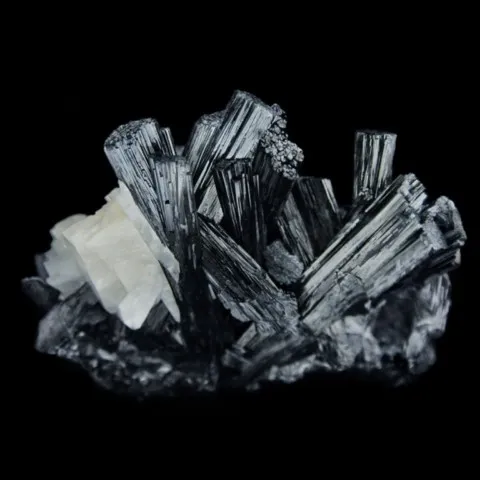MANGANITE
Class : Oxides and hydroxides
Subclass : Hydroxides and hydrates
Crystal system : Monoclinic
Chemistry : MnO(OH)
Rarity : Common
Formerly called "acerdese", manganite is the most common manganese hydroxide. It is found mainly in low-temperature hydrothermal deposits, as well as in sedimentary manganese deposits (Nikopol, Ukraine). Manganite easily loses its water and readily pyrolusite pseudomorphs, sometimes psilomelane and hausmannite ; this easy dehydration explains its rarity in outcrops in favor of pyrolusite, stable in surface conditions. It owes its name to its chemical composition. Manganite has a submetallic luster and is dark steel gray to iron black in color, manganite has perfect cleavage and forms short to elongated prismatic crystals, with striated prism faces, united in fibrous aggregates, sometimes radiated or acicular. The concretionary and collomorphic varieties, probably deriving from psilomelane, are common and constitute grainy masses with a more or less fibrous texture. Manganite is an essential constituent of large manganese deposits and therefore a major ore of this metal.
Main photo : Manganite from Ilfeld, Harz, Germany © Dan Weinrich
Manganite in the World
Twinning
Twins are known on {011} and on {100} by contact and by interpenetration.
Fakes and treatments
No fakes recorded for this mineral species.
Hardness : 4
Density : 4.29 to 4.34
Fracture : Splintery
Streak : Red-brown to black
TP : Opaque
RI : 2,250 to 2,530
Birefringence : 0.028
Optical character : Biaxial +
Pleochroism : Low
Fluorescence : None
Solubility : Hydrochloric acid
Magnetism : NoneRadioactivity : None





